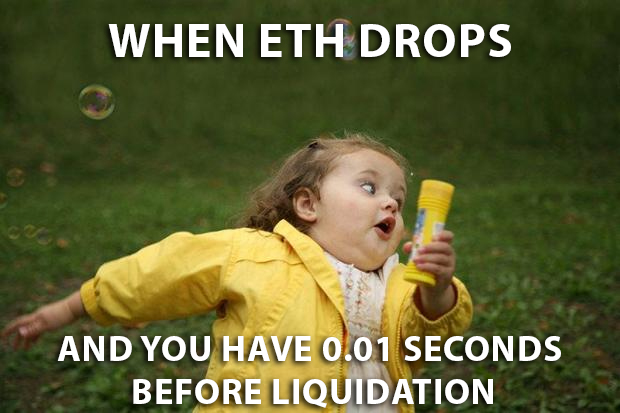How crypto lending works in practice?
My crypto experience
Last week I was introduced to crypto lending and DEX. It was a wow moment for me. You know that feeling when you struggle to understand something, and then suddenly everything clicks? You experience this moment of clarity, and what seemed unclear before becomes simple. That’s exactly what happened to me. Of course, I wanted to share that with you. I explained the basic idea behind lending and gave you some food for thought on how you could combine it with DEX.

I had a whole week to test it out. I made my first loan and my first borrow. I provided liquidity for about four days and then closed my position, earning my first profit—roughly $60—after investing $1,360. To me, that sounds amazing. Sure, this isn’t solid data to base future decisions on, but it’s motivating enough to keep exploring. And explore I did, so I’m going to share what I’ve learned.
How to use crypto lending?
First, I should mention that I personally use Aave for crypto loans. That doesn’t mean you should too. In fact, I highly recommend triple-checking every platform you plan to trust with your money. I chose Aave based on a friend’s recommendation. Later, when I did my own research, I found Aave consistently ranked in the top three on multiple lists. Since I worked at Dappradar, I trust their rankings, and Aave is listed as the second-best DeFi lending platform. For me, it was an obvious choice.
So basically, lending platforms have two instruments. You may either:
- supply assets to earn some fees
- borrow assets and pay some fees
But it gives you three benefits:
- it is one of the fastest ways to invest your money for a decent APY (annual percentage yield) if you don’t want to think much or take big risks
- you can go short on spot in a bear market
- you can keep your assets while reinvesting part of them in a bull market
I touched on some of this in my previous article but want to go deeper today.
Why should I lend crypto?
If you have crypto just sitting around, waiting for its "to the moon" moment, or tucked away like cash under the mattress, why not invest it? Especially if you can withdraw it instantly without hesitation or delay and with minimized risk. Supplying assets alone can be a pretty sweet deal. Just this week, I came across a 15% APY for USDT on Arbitrum. Sure, the rate might change, and you’re not going to get rich overnight, but seriously, where else can you find such a good balance between risk and reward?
I’ve started lending all the crypto I’m not using for higher-risk investments, and I love it. Too bad I didn’t discover this earlier.
How can I short in a bear market?
First, let’s clear up some basics for those who might be new. Markets only move in two directions—up or down. To react, you have two main strategies: go long or go short.
Long: Buy low, wait for the price to rise, sell, and profit.
Simple enough, right?
Short: Sell high, wait for the price to drop, rebuy lower, and profit.
But here’s the tricky part—how can you sell something you don’t own?
That’s where lending comes in. Let’s say you’re convinced Bitcoin is going to fall (bear market). It would feel like a wasted opportunity if you couldn’t profit from it, right? With lending, you can leave USD as collateral, borrow Bitcoin and go short. It’s that easy.
How to earn in a bull market?
Remember my experiment where I made about $60 in four days? That was a perfect example of combining lending and liquidity providing. Here’s what I did.
I was lucky enough to buy ETH when it was just below $3,000. Since I expected it to go up, there was no way I was going to sell when the price stabilized at $3,000. Instead, I left my ETH as collateral and borrowed $1,360 USDC. I split the borrowed amount into two chunks, roughly 50/50. One half I swapped for ETH, and with both parts, I created a liquidity position on Uniswap, expecting the price to fluctuate between $2,400 and $3,550.
Four days later, the price moved out of my expected range. Since the price rose, Uniswap automatically converted my investment to USDC. When I withdrew, I had earned $24.59 in liquidity fees. I immediately closed my position and repaid my Aave debt. In the end, I had $58.96 in USDC left. My profit came from the liquidity fees and the automatic ETH-to-USDC conversion triggered by Uniswap when the price rose.
What is LTV?
When you borrow, you’ll encounter something called LTV:
LTV (Loan-to-Value) ratio: The maximum percentage of your collateral’s value you’re allowed to borrow.
Why is this important? It creates a safety gap between the funds you supply as collateral and the funds you borrow. For example, let’s say you supply 1 ETH worth $3,000 as collateral. If the LTV is 80%, you can borrow up to $2,400. But what about the remaining $600?
Here’s why it exists:
- Part of it compensates lenders.
- Part of it protects them from price fluctuations in your collateral.
The second point is critical. Collateral tokens can be volatile, and if their value drops suddenly, the borrowed amount might exceed the collateral’s value. This would leave lenders at a loss. The LTV gap helps prevent this.
What is the liquidation threshold and health factor?

While LTV determines how much you can borrow, the liquidation threshold tells you when your collateral is at risk of being liquidated. It’s usually a bit higher than the LTV.
Let’s continue with the same example:
1 ETH as collateral, worth $3,000.
LTV = 80%, so you borrow $2,400.
Liquidation threshold = 82.5%.
To calculate the liquidation price, use this formula:
Borrowed amount / liquidation threshold (%)
For our example:
$2,400 / 82.5% = $2,909.09
If ETH’s price drops to $2,909.09, your collateral will be liquidated, meaning part or all of it will be lost.

To make this easier, lending platforms like Aave use a health factor. This number simplifies everything: if your health factor falls below 1, you’re at risk of liquidation. Keep an eye on it through your platform or tools like Debank.
Conclusion
Crypto lending is a fantastic tool for growing your investments. It won’t make you rich overnight, but it offers reliable ways to earn passive income or capitalize on market trends. If you want something low-effort and low-risk, supplying assets is a solid choice. If you’re more experienced, lending lets you go short in a bear market or maximize profits in a bull market.
My small experiment showed the flexibility and potential of this tool. I’m excited to keep exploring and share more insights with you.
Remember to watch your health factor, and you will hack your lending success!